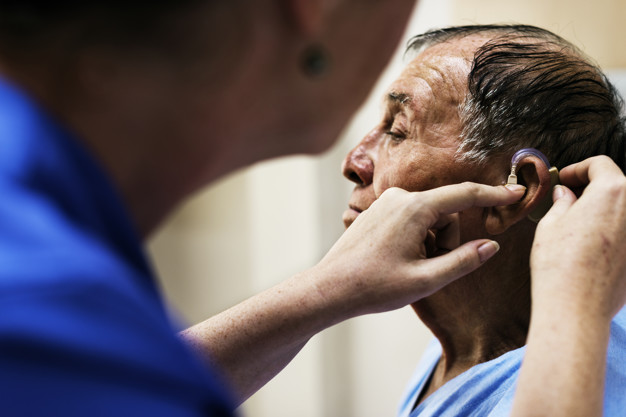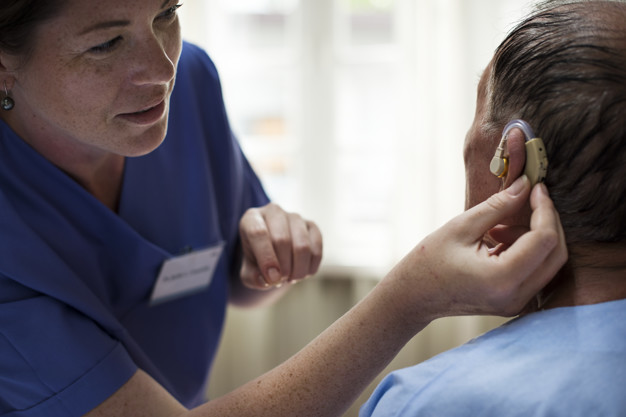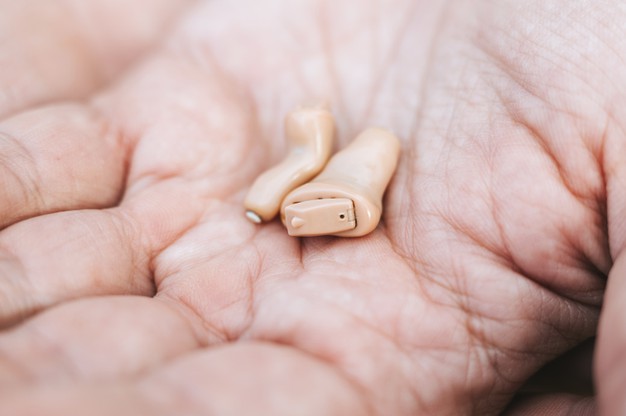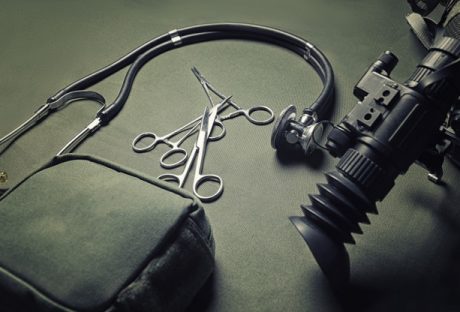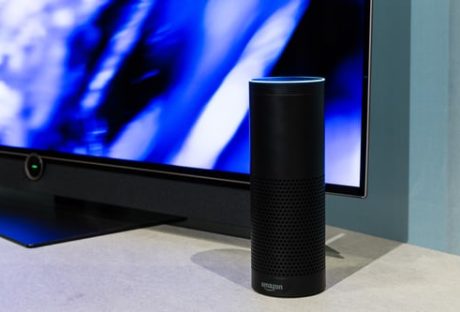Hearing loss is one of the most emerging issues in the world right now!!
There are no age boundaries for developing this condition. And you must have seen many people wearing a device on their ears.
-Yes, like earphones!!!
But those are not earphones. Instead, those are hearing devices people with mild or severe hearing loss use.
Deafness, partial deafness, or sudden hearing loss disable people from hearing to sudden sound frequencies.
Researchers are still on the go to find the perfect remedy for hearing loss but are still far from achieving the goal!!!
Until now, one of the most effective remedies for deafness has been hearing devices or hearing aids.
Therefore, through this article, I’ll tell you what hearing aids are and what you should grab for your hearing loss.
So read till the end to the “ULTIMATE GUIDELINE” of hearing aids!!!!
Hearing Aids: What Is It?
These are small devices that people wear behind their ears. Hearing aids are designed in such a way that they can amplify or make the sounds louder.
Therefore, those who face issues in hearing or communicating can easily use them.
The specialty of these devices is that they can help you hear in both noisy and quiet environments. This device has three different compartments: a microphone, an amplifier, and a speaker.
The microphone captures the sound, converts it into electrical signals, and sends it to the amplifier. The amplifier then boosts the sound and releases it into the ear with the speaker’s help.
These are the essential functions of a hearing aid device, which don’t cost much.
How Can It Help?
The primary job of this device is to help you hear sounds so that you can easily communicate with the people around you.
It can be challenging for many people, especially those with severe hearing loss. Just imagine, there was a time when you used to communicate with your friends and family, but now you cannot communicate at all because you cannot listen to what they say.
Painful, isn’t it?
The same thing happens to those who suffer from such conditions.
But these hearing aids can be a gift to their “soundless lives.” They can hear people speaking, and they also communicate with them.
Before these devices were invented, those who had hearing loss isolated themselves and put them away from environmental communications. That’s because they feel embarrassed to show up in front of the public.
But now, with these hearing devices, they can relive the moments that they thought were lost!!!!
How Will You Know If You Need An Aid?
In this case, you can always go for a check-up with your audiologist, who will help you carry out a hearing test.
These tests can also be carried out online. The benefit of an online hearing test is that you don’t have to go to the clinic; instead, you can take the test just by sitting at home.
But make sure when you are taking these tests the rooms are pin-drop silent. Otherwise, you won’t be able to take the test correctly, and it will affect your test results. Also, keep in mind to use good quality earphones for these tests.
I suggest you go to the clinic and talk with the audiologist directly, as he’ll help you out with this hearing issue!!!! As they are highly professional, they’ll help you with all the ins and outs regarding this matter!!!
Types Of Hearing Aids That You Can Get
There are various types of hearing aids that you’ll find!!!!
These have different features and designs. Each suits another purpose, but one common thing between all these devices is that they will help you hear again.0
Behind-The-Ear:
These hearing aids are made up of hard plastic, and it’s worn behind the outer ear. All electronic compartments stay behind the ear. The tube that’s connected to the hearing aid is put inside the ear. The sound then passes through the line and into your inner ear.
A new version of the device has no sort of outer fits; instead, it’s open-fit, making it look like a “Bluetooth Earphone.” And this new version of the device is also very reliable!!!
These devices are used by people of all ages who suffer from ”mild” hearing loss or partial deafness.
In-The-Ear:
These devices are more high-tech than the behind-the-ear devices. People of all ages also use in-the-ear hearing aids and are only applicable for mild deafness.
The hearing aid is directly connected to the outer ear, and in this device, you’ll also find an extra feature that’s the “telecoil.” Telecoils are tiny magnetic coils that help the user receive the sound through the circulatory instead of the microphone.
This can be very helpful to people, especially when they talk over the phone or are in crowded places.
But it’s highly recommended for adults of all ages but not for young children as the casing of this hearing aid might need to be replaced often as the size of the ear increases.
Canal:
Canal aids come in two forms: the “in-the-canal” and “completely-in-canal.”
The in-the-canal is designed so that it easily fits the shape and size of a person’s ear. The completely in-canal is more advanced as this hearing aid directly fits into the ear canal, keeping it hidden.
The best part of this aid (completely-in-canal) is that people will not see this device; hence, there will be no chance for them to identify whether you are suffering from hearing loss or not.
But the only issue that you might face is adjusting these devices as they are tiny in size. These devices are not usually suggested for young children.
Moreover, this device should only be used for mild or moderate hearing loss and only when your audiologist will recommend it!!!
I hope this article will now give you a complete guide to hearing aid devices!!
Choosing Hearing Aids: 5 Things To Consider Before Buying
You must explore the options of hearing aids you have before you choose something. There’s more to it than just the types of aids available in the market. Here are a few things to remember when choosing a hearing aid.
Get Yourself A Checkup.
First, get your hearing tested and checked by a specialist. If the reason for your hearing problems is temporary, then they’ll help you decide accordingly. But, if it’s because of earwax or infections, then they might rule out the need for one.
Consult With An Audiologist
The best thing would be to take a referral to an audiologist from your doctor. They’ll check your hearing abilities and adjust a device tailored to your needs. This might be for one ear or for both.
Ask For A Trial Period
When getting a hearing aid, make sure that you are buying one with a trial period. This is important since you don’t know if the product you are buying will fit you or not. If it’s not your size or feels discomforting, you may want to exchange it.
That’s why it’s important to know whether there’s a trial aid or not. Also, consider if the amount of the device’s trail period is adjusted to the final price or not. It’s also good to consider if they have a refund policy.
Think For Future Needs
When considering a hearing aid, consider one that’ll work with increased powers. If your hearing capability reduces, you’ll need something better to help you listen. But, if you have to change it, then it’s better to opt for other options.
Check For A Warranty
Some hearing aids provide you with a warranty for a period. Also, in that period, check if you can claim part replacement or get any technical problems solved through their technicians. Warranty periods and terms are also considerable parameters for choosing the right hearing aid.
How Much Does Hearing Aid Cost?
Hearing aids cost around $1000 to $3500. If you are getting one that costs around $3000, then you’re spending around $5.50 to $6 dollar per day for the next 4 years. However, it does not necessarily have to be of the same price since the price range starts at $1000.
Bottom Line
No two products are the same. So, when buying your hearing aid, first consider what helps your health. Take help from your audiologist in choosing the right specifications. Then, take your budget and warranty into consideration. In many cases, you can also get your hearing aids insured when they are expensive.
But the best results won’t come until you keep using them and adjust your hearing capabilities with their help.













